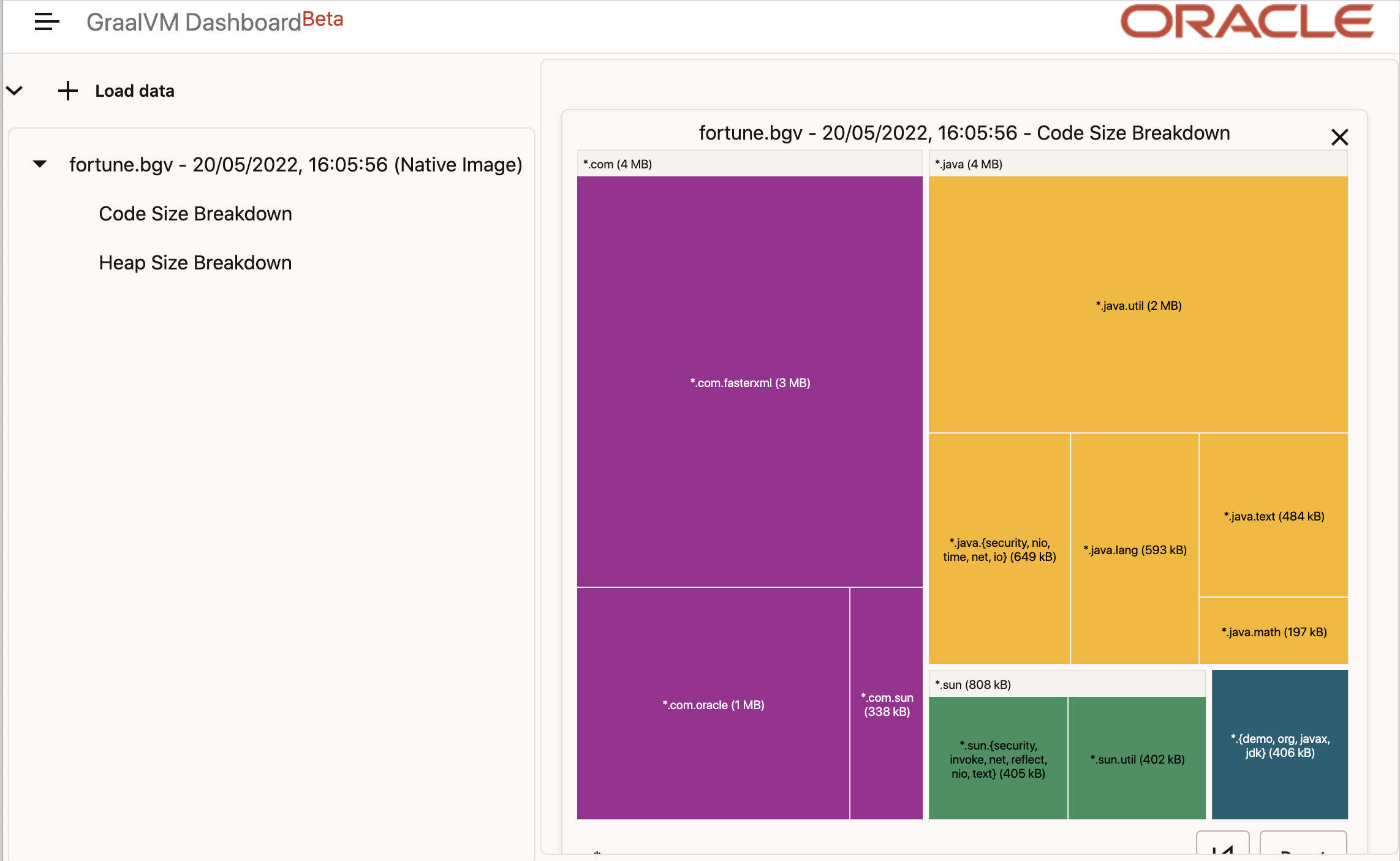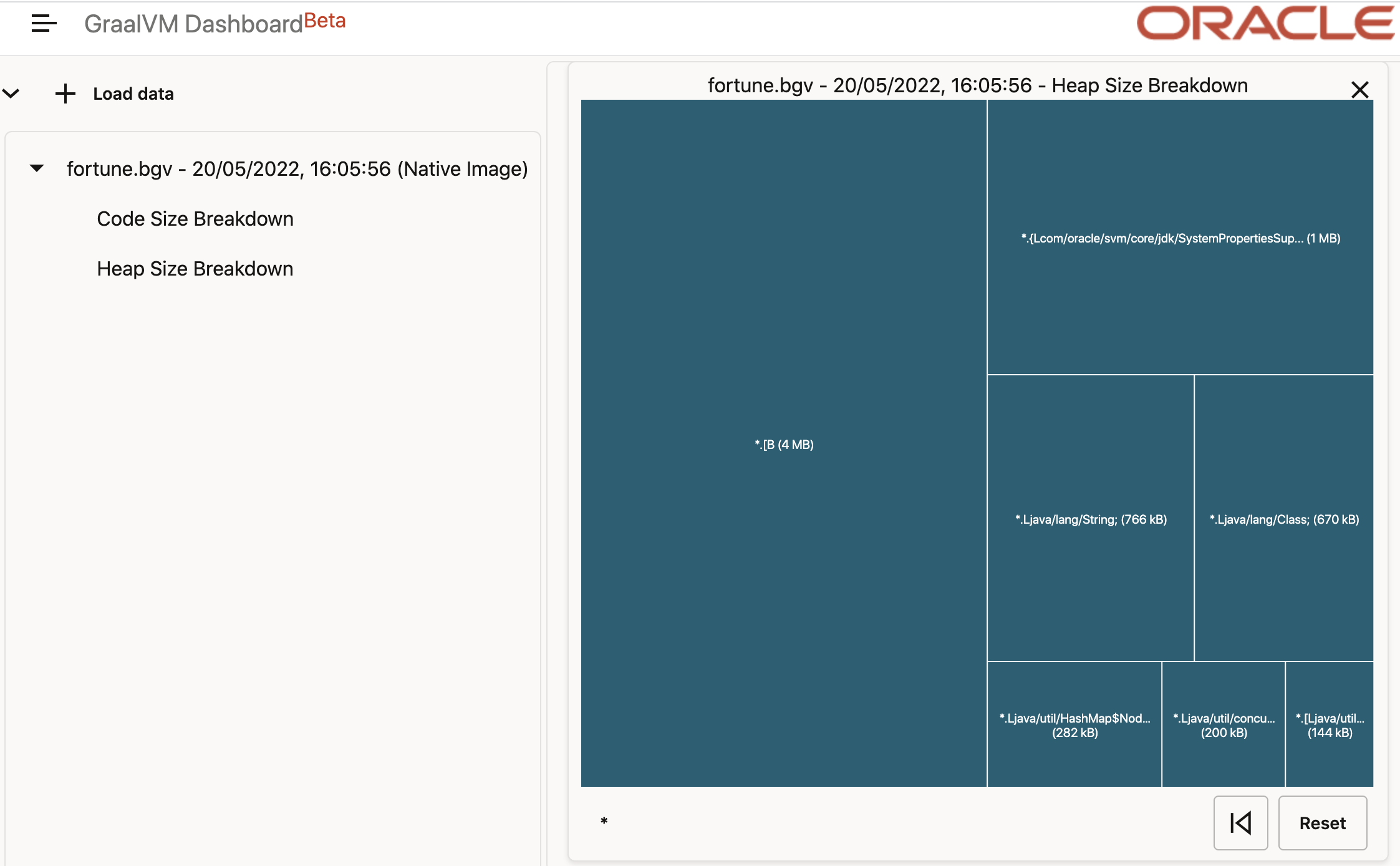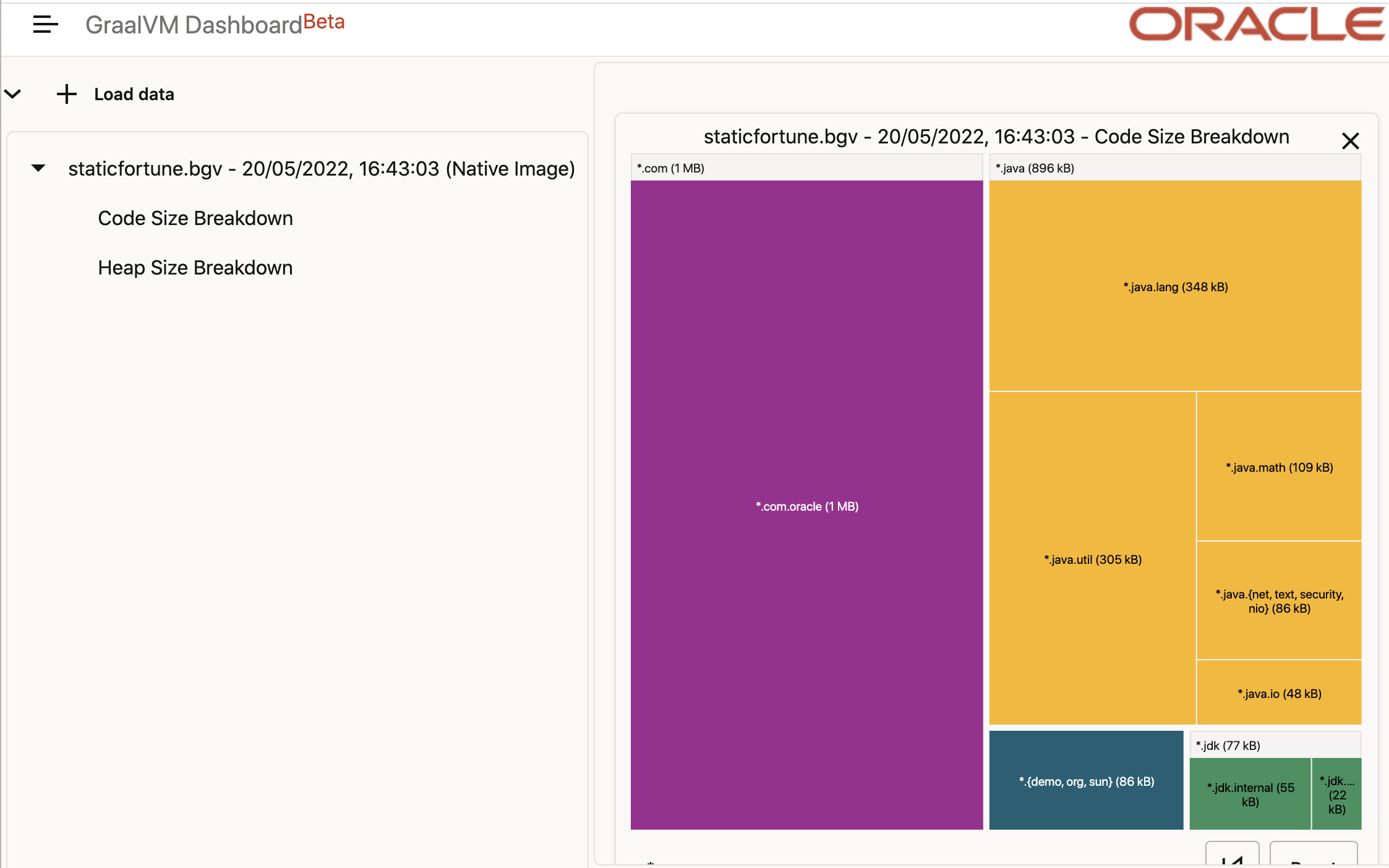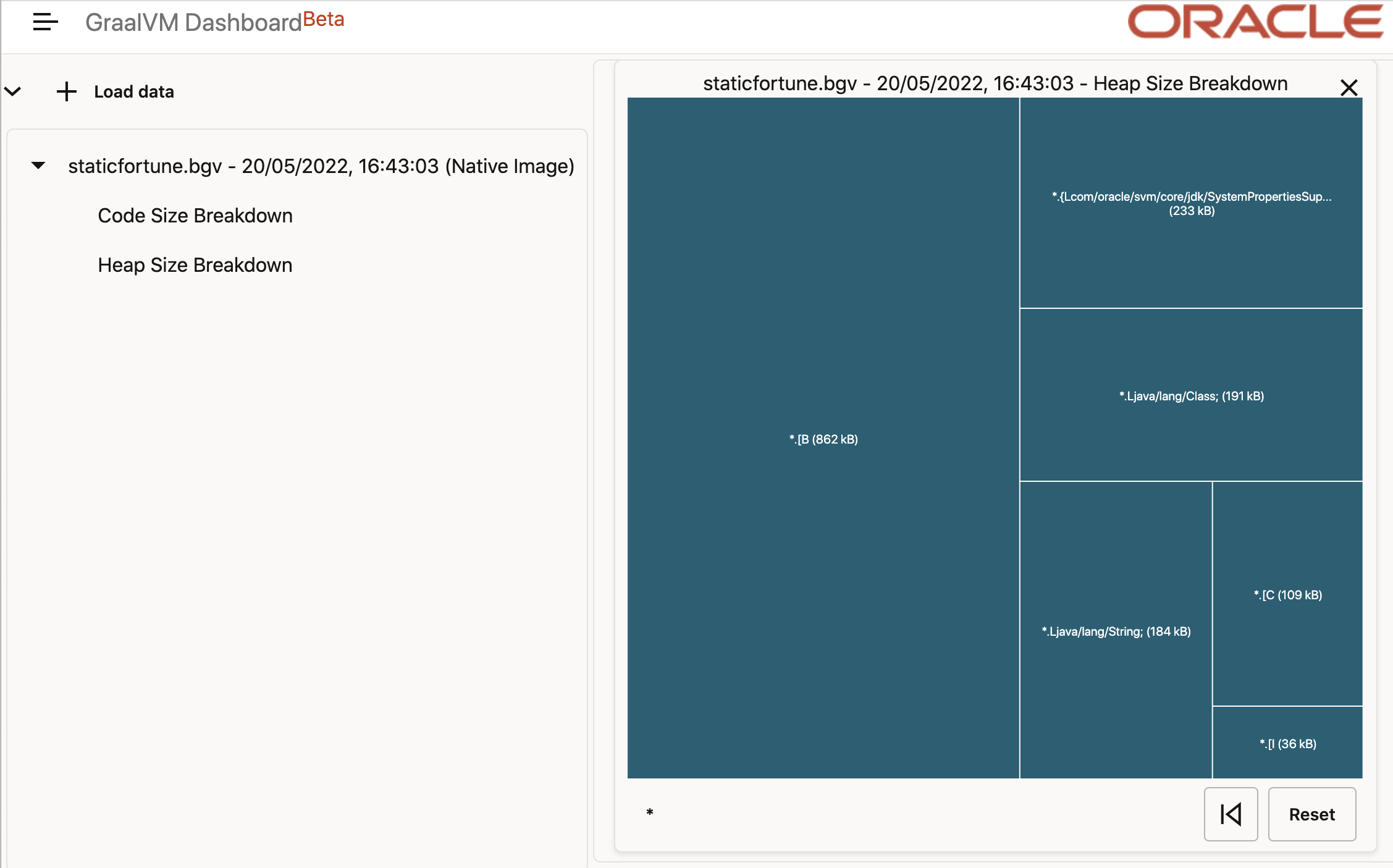Make sure you have installed a GraalVM JDK. The easiest way to get started is with SDKMAN!. For other installation options, visit the Downloads section.
git clone https://github.com/graalvm/graalvm-demos
cd fortune-demo/fortune
mvn clean package
mvn -Pnative -Dagent exec:exec@java-agent
The application will return a random saying.
The agent generates the configuration files in the target/native/agent-output subdirectory.
mvn -Pnative -Dagent package
When the command completes, a native executable, fortune, is generated in the /target directory of the project and ready for use.
./target/fortune
The application should slowly print a random phrase.
The application’s pom.xml file employs the Native Image Maven plugin to build a native executable, configured to produce diagnostic data using these two options:
-H:DashboardDump=fortune -H:+DashboardAll
These options result in a file named fortune.bgv. (For more information about different options, see Dumping the Data for GraalVM Dashboard.)
Compare the sizes of the JAR file and the native executable (for example, using du):
du -sh target/*
0B target/archive-tmp
136K target/classes
17M target/fortune
2.0M target/fortune-1.0-jar-with-dependencies.jar
32K target/fortune-1.0.jar
44M target/fortune.bgv
4.0K target/fortune.build_artifacts.txt
0B target/generated-sources
4.0K target/maven-archiver
8.0K target/maven-status
0B target/test-classes
The size of the JAR file is 2MB, compared to the 17MB size of the native executable. The increase in size is because the native executable contains all necessary runtime code as well as pre-initialized data in its heap.
Open the GraalVM Dashboard and load the fortune.bgv file. (Click +, click Select File, select the fortune.bgv file from the target directory, and then click OK.)
The GraalVM dashboard provides two visualizations of a native executable: code size breakdown and heap size breakdown. (For more information, see Code Size Breakdown and Heap Size Breakdown, respectively.)

The screenshot above visualizes the code breakdown of the fortune native executable, a great part of which consists of the Jackson JSON parser library implemented in the package com.fasterxml. One approach to reduce the size of a native executable is to minimize the amount of space taken by code. The code size breakdown gives you an insight into the amount of space taken up by the packages that are included in your native executable.
Furthermore, the screenshot below shows that the heap of the native executable contains 4MB of Bytes and almost 800KB of Strings. Another approach to reduce the size of a native executable is to minimize the size of its heap.

In the next section, we’ll consider an alternative implementation for the fortune application that reduces the amount of code and reduces the size of the heap.

